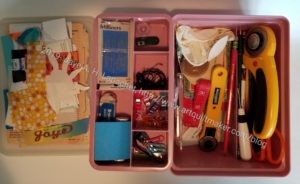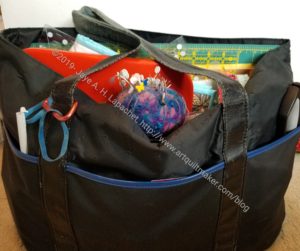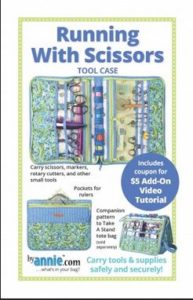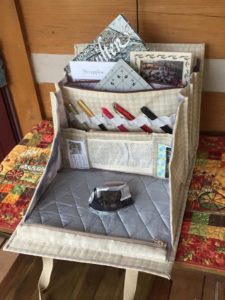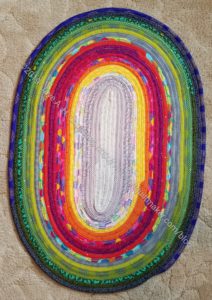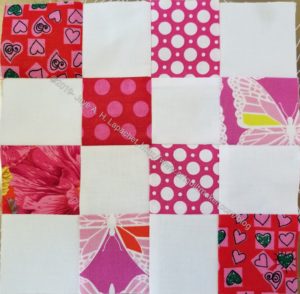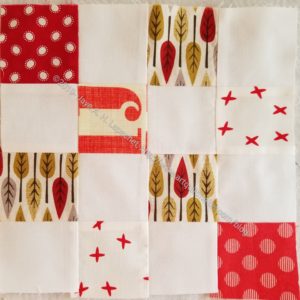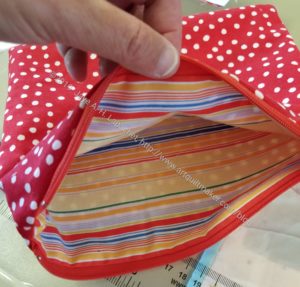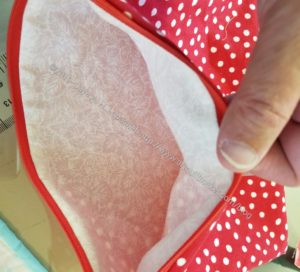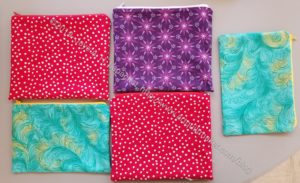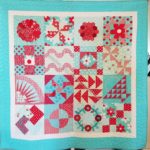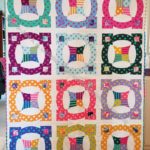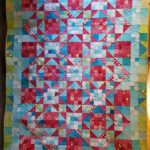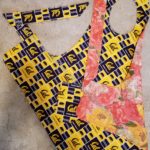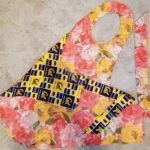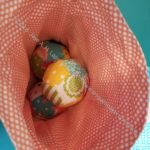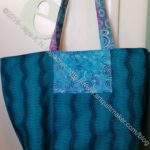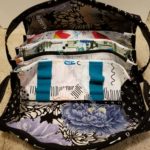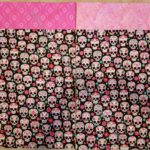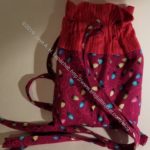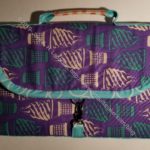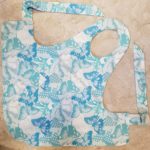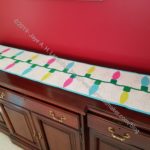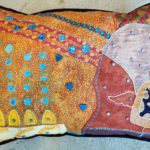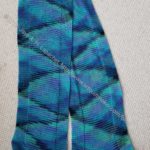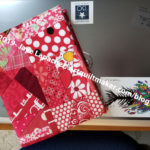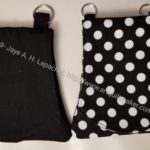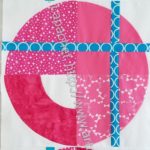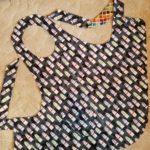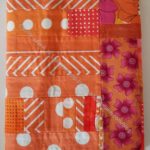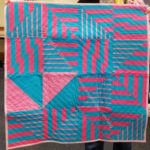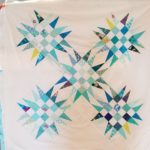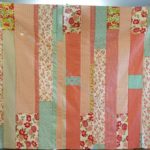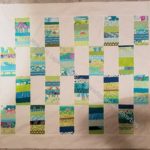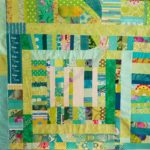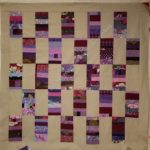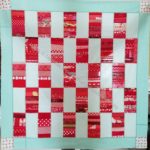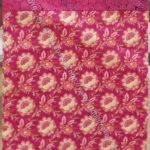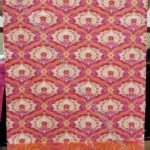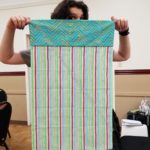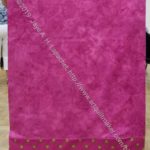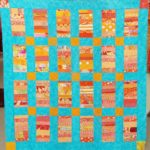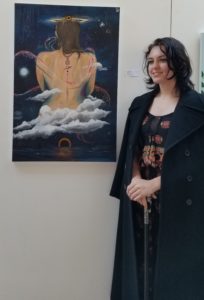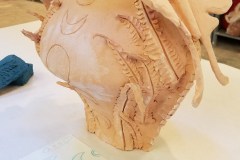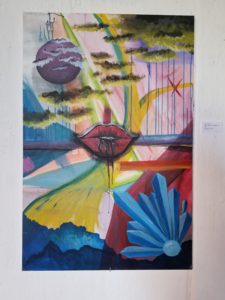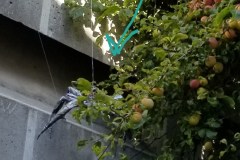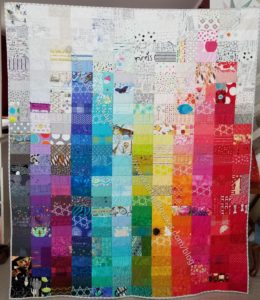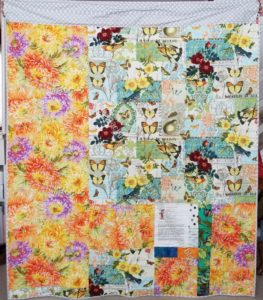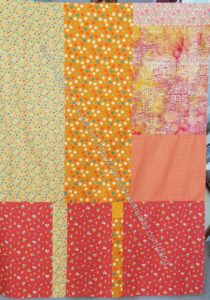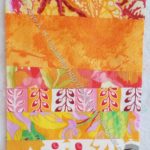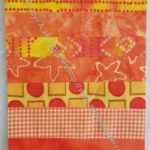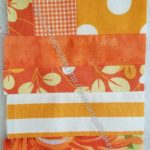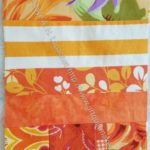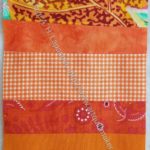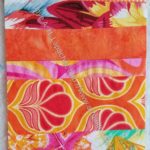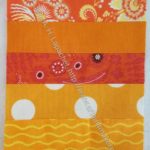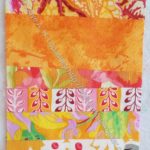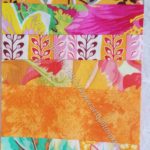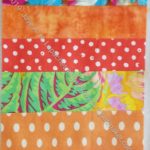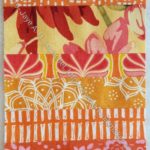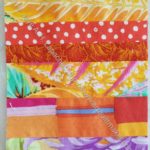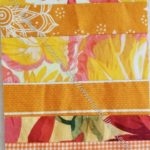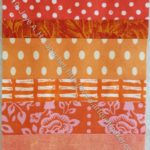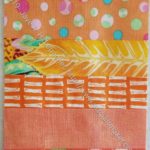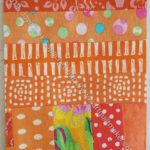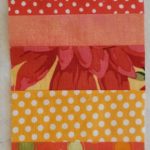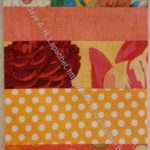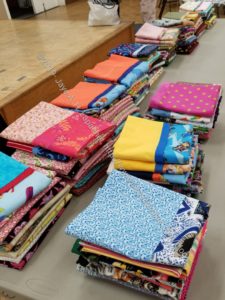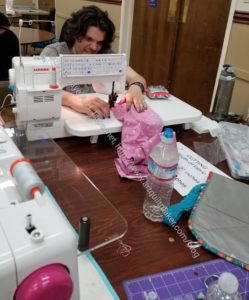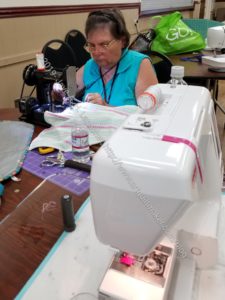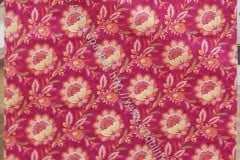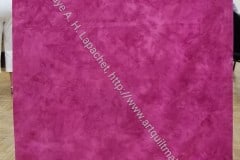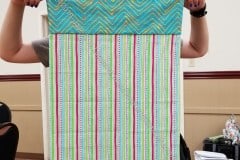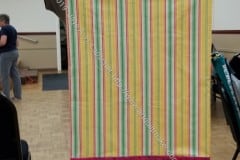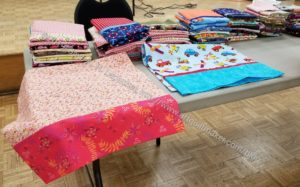Other Artists
Friend Julie put up some links that I wanted to include here. However, there turned out to be too many, so I am linking to her Cornucopia post. Check out her links. I especially like the no bulk elastic join, which I think could be really useful!
I like the red blocks in Julie’s Luminous quilt. They give me a new idea for my strip donation quilts after I finish the ones I am working on. I wrote more about this a few days a go. What do you think?
You may have heard that Rosalie Dace was deported when she tried to enter the country to teach recently. The Quilt Show posted the story of what happened to her.
My guild is contributing stitches to Jennifer Kim Sohn’s 25 million stitches project. This is described as a public engagement art installation. If you or your guild want to participate, there are instructions on the site. The final deadline is Apr 30, 2020.
I like the quilting on this dogwood quilt. I also like the pattern and the color choices.
Laura Kemshall has an update on the Ruby Star Project.
QuiltDiva Julie has a page dedicated to her workroom. She has a lot of great ideas for storage and workspaces. Her DH seems very handy with a hammer and saw!
Projects, Patterns & Tutorials
Love of Patchwork & Quilting is starting a new block of the month program.
I delved into one of (I think??) the Modern Quilt Guild’s sites after getting a link in an email. I don’t know if they have changed the site or there are multiple sites, but I didn’t recognize it from where I had been before. I looked around and came across a section on virtual bees. There are some interesting and, at least one, moving stories included. What was not included was things that are problematic about any kind of round robin. I have experienced poor workmanship, bad fabric (ugly and poor quality) and projects disappearing. I am sure my experience is in the minority and I did have a couple of good in person experiences, but I stay away from these types of projects as I see them as possibly turning into problems or ending up as projects I don’t like or don’t want to do.
Sara of Sew Sweetness has a book club as part of her site. With each book she releases a free pattern. This time it is the Suffolk Coin Purse. This would make great gifts for guild mates.
MellySews has a whole bunch of tutorials. I was impressed with the accessories section, but there are clothing and kids sections as well.
I found a Purse Organizer pattern in my quest for zipper pouches. I think it is more like a super sized zipper pouch, or makers wouldn’t need to use it as a purse organizer, but could use it as sub-organizer in other bags. With the fabric, men could use it as well.
A week or so ago, I was reading Barbara Brackman’s Material Culture blog post. She posted the current results of applique’ BOM she is running on her Civil War blog. She has just posted block #7 and you can scroll back through the blog (January – July 2019) to to get the other blocks if you want them for free. Alternatively, you can buy them all at once in PDF form to print yourself from her Etsy site (instant gratification). She’ll mail you black and white pattern sheets, the purchase of which is also available in her Etsy shop.
Barbara is starting up a Daredevils QAL. I talked about this before, but now it has started. She introduced the first block a week or so ago. This block is not for the faint of heart, but speaks to me and my desire for more complicated and interesting blocks. I haven’t decided if I will do the QAL or not, but am thinking about it. She has some great examples of quilts made with the first block. One thing I like about the first block is that Barbara is showing old blocks, talking about them and exposing people with new and modern fabrics to them, so we can make something new out of them.
Fabric, Supplies & Tools
Remember my Octagon 9 Patch quilt? It has been on my mind lately. If you want to make one, check out these Octagon templates from EE Schenk.
I get the Paintbrush Studios newsletter. In a recent issue, sent July 29, 2019, they introduced their Hallowe’en fabrics, Halloween Night by Katie Larson. They also said “Halloween Night will not be available online this season, so the only way to get it is through your local fabric store!” I discussed it a little with Friend Julie and we have lots of questions. What if a fabric shop has an online presence? Do they just mean Amazon and other large fabric selling sites?
Spoonflower’s newest issue is out. Yes, it is all about trying to sell you their fabric, but it is a beautiful magazine with great imagery. I like the way they combine different fabrics and show various ways they can be used. There are no internal links, apparently, so you can’t click from something in the magazine to their website. I am sure that functionality is coming. Find a pattern for zipper pouches referenced.
Scruffy Quilts was probably the closest shop to me. I went there for a few hours periodically to take advantage of their open sew and also to take classes. The brick and mortar store closed this year. The other day I got an email, so I think their online store is still open (or open again?).
Articles, Exhibitions & Books
The Quilters’ Guild of the UK is celebrating 40 years of collecting quilts. A book about their 40 years of collecting is available through their shop for 12 English pounds. It does not appear to be available on Amazon.
The Patchwork Association of Spain (Asociación Española de Patchwork) hosts
The Craft Industry Alliance has an article about Sara Lawson of Sew Sweetness and how she uses video.
With all of the celebrations around the Apollo 11 spacecraft, I was not surprised to see an article about the seamstresses who helped ‘clothe’ the astronauts. Women, the article reports, had the agility and accuracy to make the suits to detailed specifications and with no mistakes.
Lately I have been reading magazines via RBDigital by checking them out of my library. I’d rather read them in print, but I am being a cheapskate. I also want the library to buy more quilting books and magazines. In a recent issue of Quilts and More, I saw an Acrylic Ruler Connector. This seems like a great idea! It is described as: “Extend your cutting ability with our smart design Acrylic Ruler Connector. This device bridges and holds together two acrylic rulers of any size for accurate, longer cuts. A retractable alignment guide helps square up rulers for a smooth, clean cutting edge, and folds up, out of the way, to allow for cutting on all sides. The tension handle can be pressed to not only ensure a tight grip between rulers, but serves as a comfortable place to rest your hand while cutting.” The description appears to say that users can use any ruler. Unlike the Guidelines4Quilting connector which needs their special rulers. Check out product features on the Fiskars product page. If you buy one, tell me what you think.
I also recently saw an ad for the Clover Ultimate Quilt ‘n Stitch Presser foot. It is described as “Clover’s Ultimate Quilt n Stitch presser foot is your go to for creating parallel line straight stitching and straight line machine quilting. Featuring a built in stitch ruler for guiding rows of parallel stitching. Distance can be set between needle and alignment guide from 3/8 inch to 3 inch. Easily stitch multiple rows of stitching without marking each line.” I liked the variety of measurements. Some machines have these types of attachments, so you don’t this Clover version. Check your machine specs before you buy to make sure your machine is compatible.
Duke has a celebration of 20 years of the Durham African American Quilt Circle.
Nebraska quilters have a site that preserves their stories. This particular page points to Grace Snyder who was discussed recently in the Quiltfiction FB group.
My DH sent me a link to Aimee Hodge’s Crazy Quilt style parlor throw. It is thought that Aimee worked on this throw throughout her life.
Media
Want a dream sewing room/quilt studio? Sign up to win one with AllPeopleQuilt.
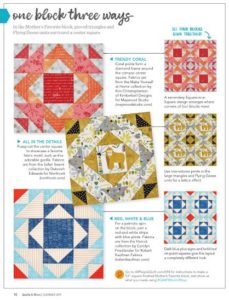
While reading the Summer issue of Quilts and More, I saw their “One Block Three Ways” feature. This is a great example of the power of blocks. It also shows how to achieve a completely different look from one block. I have since read another issue and they seem to have it in every issue. Check it out from the library or on the AllPeopleQuilt site.
Kind reader Colleen passed along a link to a publication discussing running a crafty business. How shopowners got started, pricing and other relevant business topics are discussed. It is a PDF and the PDF is well done and pretty.
I just heard about the Awesome Box, which looks like it could be a great way to get a variety of art from different people.
At Home with Artquiltmaker
After buying a few yards of fabric, I have again achieved the net usage of 50 yards of fabric. I have actually used over 100 yards, but the purchases have offset the total used. 41% of my total usage is for charity. I am pleased with that, though it could be better!


